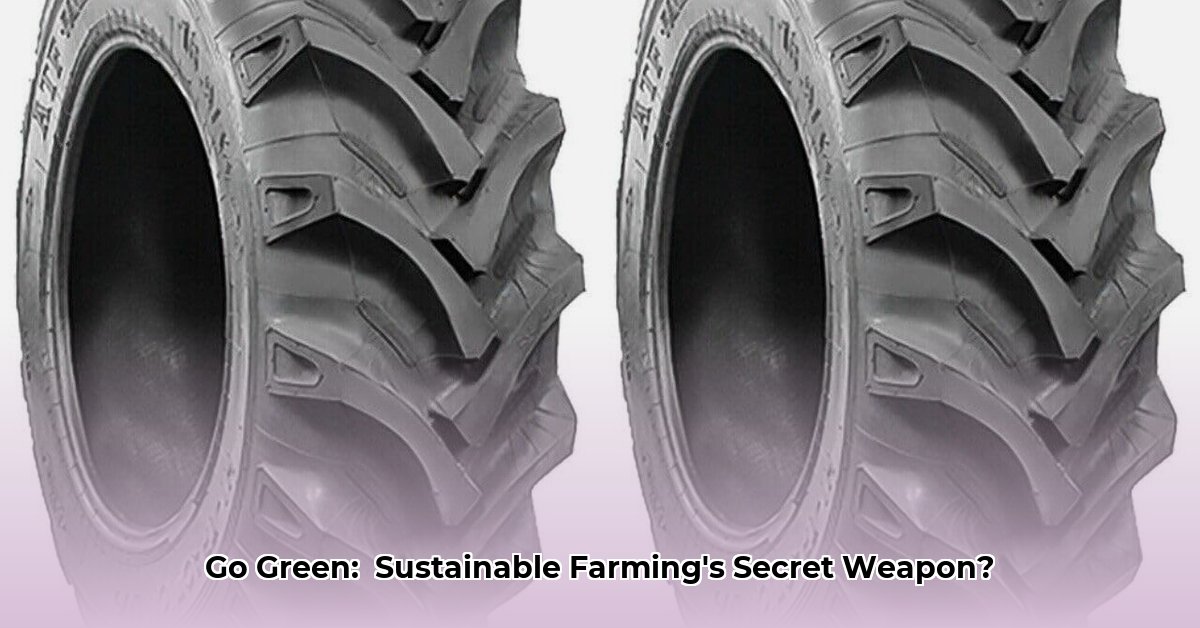
13.6 Tractor Tires: A Greener Future for Farming
The hum of a tractor, the scent of freshly tilled earth – these are the hallmarks of farming. But behind the idyllic image lies a crucial component often overlooked: tractor tires. Specifically, the ubiquitous 13.6-28 size. These seemingly simple pieces of rubber play a significant role in sustainable agriculture, impacting soil health, fuel efficiency, and the overall environmental footprint of farming operations. This article delves into the challenges and opportunities surrounding 13.6-28 tractor tires and the path toward a greener future. For more information on various tractor tire sizes, check out this helpful resource: tractor tire guide.
The High Demand for 13.6 Tractor Tires: Market Overview
The agricultural sector relies heavily on tractor tires, and the 13.6-28 size remains incredibly common across a wide range of farming operations. With an aging tractor fleet requiring frequent tire replacements, the market for these tires boasts significant and consistent demand. Online searches alone reveal the scale of this market, underscoring the potential for positive environmental impact through sustainable manufacturing and purchasing practices. But how are we meeting this demand sustainably? That's the burning question.
Does the current trajectory of 13.6-28 tire production adequately address the growing need for environmentally conscious solutions in agriculture?
Sustainability Challenges in Tractor Tire Production: The Hidden Costs
The environmental impact of 13.6-28 tractor tire production is often shrouded in a lack of transparency. Manufacturers haven't always been forthcoming about their production processes' energy consumption, carbon emissions, and end-of-life management. This data gap hinders informed decision-making for farmers and policymakers alike.
"The lack of transparency in the tire industry regarding sustainability metrics is a significant barrier to progress," states Dr. Emily Carter, Professor of Chemical and Biomolecular Engineering at Princeton University. "We urgently need standardized reporting to assess and compare the true environmental cost of different tire production processes."
Sustainable Innovations and Opportunities: A Greener Path Forward
Fortunately, innovation is driving positive change. Flotation tires, for example, are gaining popularity due to their ability to distribute tractor weight more effectively, resulting in less soil compaction. This minimizes soil erosion and improves water absorption, crucial for sustainable farming. Beyond flotation tires, the potential of bio-based materials and recycled rubber in 13.6-28 tire production represents a significant leap forward. While challenges related to cost-effectiveness remain, the potential environmental benefits are substantial.
How can we accelerate the adoption of bio-based and recycled materials in tractor tire manufacturing?
Actionable Steps for Stakeholders: A Collaborative Approach
To achieve meaningful progress, collaboration is key. Here are actionable steps that different stakeholders can take:
1. For Tire Manufacturers:
- Transparency Initiative: Publicly release detailed life cycle assessments (LCAs) of your tires, including carbon footprints, materials sourcing, and end-of-life options. (LCAs evaluate a product's environmental impact throughout its entire life cycle)
- Invest in R&D: Commit significant resources to developing and implementing sustainable manufacturing processes, specifically exploring the use of recycled rubber and bio-based materials.
2. For Farmers and Agricultural Businesses:
- Informed Purchasing: Prioritize tires with demonstrably lower environmental impact. Ask manufacturers for transparent data, and reward companies committed to sustainability.
- Precision Agriculture: Optimize tire pressure to minimize soil compaction and maximize fuel efficiency.
3. For Governments and Regulatory Bodies:
- Regulation and Incentives: Implement policies that incentivize the production and use of sustainable tires, including stricter regulations on tire disposal and the promotion of recycled materials.
- Standardization: Develop standardized reporting requirements for tire manufacturers to ensure transparency and comparable sustainability data.
4. For Research Institutions:
- Scientific Collaboration: Conduct comprehensive life cycle assessments (LCAs) of various tire types to identify areas for improvement and guide innovation.
- Innovation Funding: Provide funding to advance research into sustainable manufacturing processes and alternative materials for tractor tires.
Risk Assessment and Mitigation: Addressing Potential Challenges
The transition to more sustainable tire production and usage presents certain risks.
| Risk Factor | Short-Term Risk | Long-Term Risk | Mitigation Strategy |
|---|---|---|---|
| Raw Material Sourcing | Supply chain disruptions | Resource depletion | Diversify sourcing; invest in sustainable material supply chains. |
| Manufacturing Processes | Higher initial costs | Greenhouse gas emissions | Invest in energy efficiency and renewable energy sources. |
| Tire Durability/Lifespan | Potential for reduced performance | Increased replacement costs | Optimize tire designs to ensure durability & longevity. |
| Regulatory Changes | Adaptation costs | Compliance complexities | Proactively engage with regulatory agencies and anticipate future changes. |
The Regulatory Landscape: Navigating the Legal Terrain
Governments are increasingly focused on environmental regulations. Expect stricter standards relating to tire composition, manufacturing processes, and disposal methods in the near future. Proactive engagement with regulatory bodies is crucial for navigating this evolving landscape.
Conclusion: A Sustainable Future for Farming
The demand for 13.6-28 tractor tires presents a significant opportunity to drive progress towards sustainable agriculture. Through transparency, innovation, and collaborative efforts, the agricultural sector can reduce the environmental footprint of farming and build a healthier future for generations to come. The journey requires commitment and adaptation, but the rewards—a more sustainable and resilient food system—are well worth the effort.